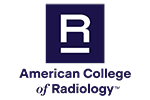How to Read Your Liver Imaging Report using LI-RADS
Chronic liver disease, or cirrhosis, is when healthy liver is replaced by scar tissue. This scar tissue stops the liver from working normally. It may also lead to liver cancer or even death.
People with cirrhosis are at high risk for two types of liver cancer. Hepatocellular carcinoma (HCC), which begin in the cells of the liver, and cholangiocarcinoma, which begins in the bile ducts inside the liver.
If you have chronic liver disease, your doctor will monitor you with blood tests and medical imaging to look for changes in the liver. Your doctor may order ultrasound (US), CT, and/or MRI to image your liver. After the exam, the radiologist will analyze the images and prepare a report summarizing the findings and impressions. For more information on your imaging report, see How to Read Your Radiology Report.
LI-RADS and Liver Imaging
If you are at high risk for HCC, the radiologist reading your images will use the Liver Imaging Reporting and Data System, or LI-RADS, a language developed by experts in liver imaging and liver disease to report findings on your scan(s). LI-RADS helps eliminate mistakes and improve communication between members of your care team.
The radiologist will assign a LI-RADS number or letter category to each lesion (which may also be called a mass, nodule, or observation) seen on the images. Your report may include more than one LI-RADS category because people with cirrhosis can have many different types of lesions in their liver. In patients with chronic liver disease, the way a mass looks can change over time. Therefore, the LI-RADS categories may change from one imaging exam to the next.
Doctors only use LI-RADS for patients who have cirrhosis or who are at high risk of developing HCC. (No LI-RADS categories will appear if the patient is not at increased risk for HCC or is under the age of 18.)
| Doctors use LI-RADS for people at high risk for HCC, including: | Doctors do not use LI-RADS for: |
|---|---|
|
|
LI-RADS for Ultrasound (US)
Doctors use dedicated liver US to look for early signs of cancer in high-risk patients and to closely watch a diseased liver. If a lesion is found by ultrasound or if the liver tissue is difficult to evaluate on ultrasound, your doctor may order a CT or MRI.
LI-RADS categories for US range from 1 to 3:
- no evidence of cancer. Follow-up US in 6 months is typically recommended.
- a small mass less than 1 cm. Follow-up US is recommended in 3-6 months.
- a large mass more than 1 cm. Further imaging with contrast is recommended.
Your US study may also have a letter. This letter indicates if the radiologist was able to clearly see the liver or if the images were limited in some way.
Liver visualization scores (lettered categories) for US range from A to C:
- no or minimal limitations
- moderate limitations
- severe limitations: Recommend repeat US within 3 months or switch to an alternative imaging test to screen for cancer
LI-RADS for Contrast-enhanced Ultrasound (CEUS)
Contrast-enhanced ultrasound (CEUS) is now available at some centers. It uses a special type of contrast material (microbubbles) injected intravenously that highlights abnormalities in the liver. It is performed by specialized radiologists and can be used to determine if a lesion is cancer.
CEUS LI-RADS categories range from 1 to 5:
- CEUS LR-1: definitely benign (not cancer)
- CEUS LR-2: probably benign (not cancer)
- CEUS LR-3: intermediate probability of HCC
- CEUS LR-4: probably HCC
- CEUS LR-5: definitely HCC. A biopsy is not needed to confirm the diagnosis in most patients.
Letters are used to describe other findings:
- CEUS LR-M: the lesion looks like a malignant cancer other than HCC. An image-guided biopsy is typically recommended.
- CEUS LR-TIV: cancer has spread into the blood vessels of the liver.
- CEUS LR-NC: the abnormality could not be evaluated. This may happen when the image is blurry or not high enough in quality.
LI-RADS for CT and MRI
Liver lesions seen on CT and MRI are categorized from 1 to 5:
- LR-1: definitely benign (not cancer)
- LR-2: probably benign (not cancer)
- LR-3: intermediate probability of HCC
- LR-4: probably HCC
- LR-5: definitely HCC. A biopsy is not needed to confirm the diagnosis in most patients.
Letters are used to describe other findings:
- LR-M: the lesion looks like a malignant cancer other than HCC. An image-guided biopsy is typically recommended.
- LR-TIV: cancer has spread into the blood vessels of the liver.
- LR-NC: the abnormality could not be evaluated. This may happen when the image is blurry or not high enough in quality.
LI-RADS for Post-Treatment Imaging
When a patient treated for liver cancer has follow-up imaging with CT, MRI or CE-US, radiologists use the LI-RADS category "TR" (for treatment response). TR categories report how a tumor responded to treatment:
- LR-TR Non-evaluable: The treatment response cannot be evaluated because of poor image quality.
- LR-TR Nonviable: There is no remaining cancer.
- LR-TR Viable: There is a high likelihood of cancer at the treatment site.
- LR-TR Equivocal: The radiologist is not sure if there is remaining cancer at the treatment site. More imaging may be needed.
Next Steps
It is a good idea to obtain a copy of your images and report. Bring them with you to appointments with your liver doctor and treatment team. Ask your imaging facility to download a copy of your imaging exam and report.
For more information, see How to Obtain and Share Your Medical Images.
To protect your privacy, only you can grant permission to share your imaging and report with others.
The radiologist who read your imaging exam will send a signed report to your doctor who ordered the test. Your doctor will then share the results with you. Many patients can get their radiology reports and medical images online. Ask your imaging facility if this is available.
If you have questions about your imaging report, you can ask the doctor who ordered your imaging exam. If you still have questions, contact the imaging facility to ask if the radiologist is available to talk to you.
Your next step will likely be one of the following:
- You and your doctor will review and discuss the imaging report and create a treatment plan.
- Your doctor may refer you to a liver specialist who will work with you to create a treatment plan.
- Your doctor may meet with specialists to review your images and health information. After agreeing on the best plan, they will recommend treatment options for you and your doctor to review.
- You may ask for a second opinion at the same or another healthcare facility.
This page was reviewed on July 15, 2023



